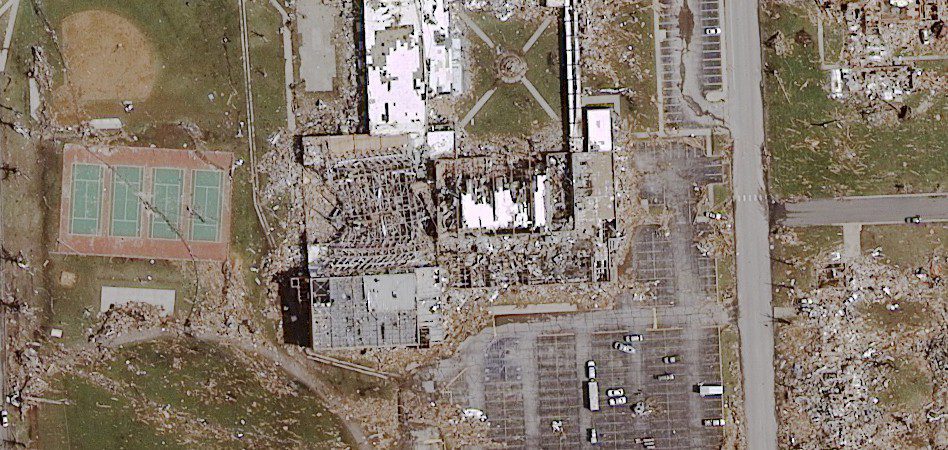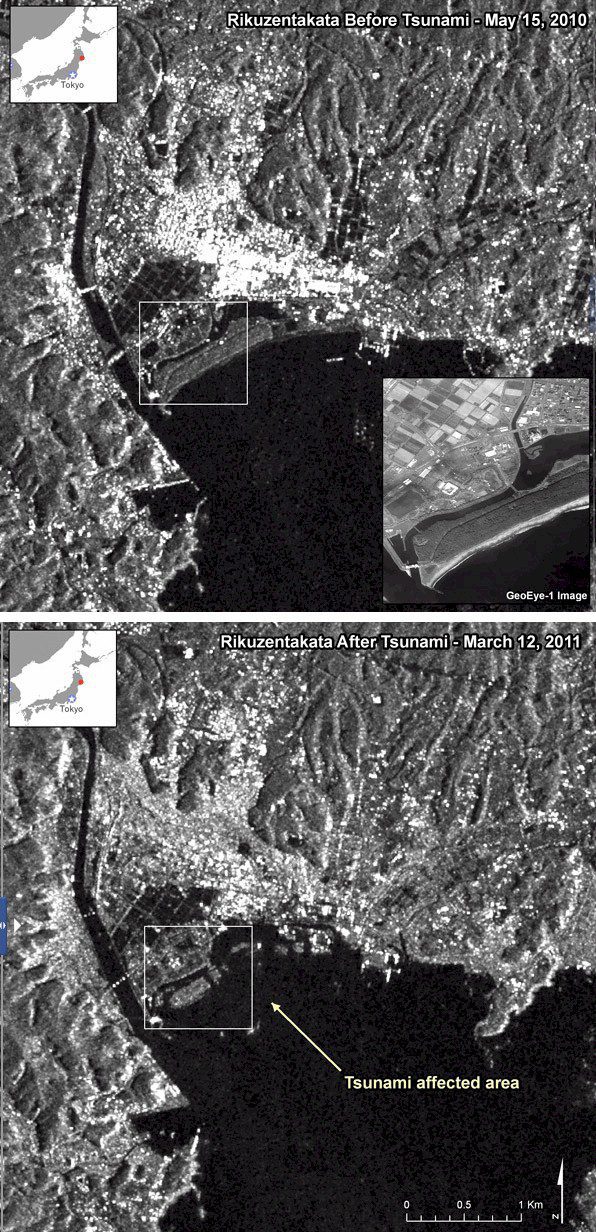This one-foot resolution, digital aerial image of Joplin, Mo., was collected May 24, 2011, at approximately 9:30 a.m. The image shows the remains of Joplin High School, located at 21st and Indiana, just two days after a Level 5 tornado touched down on May 22, 2011 and...



